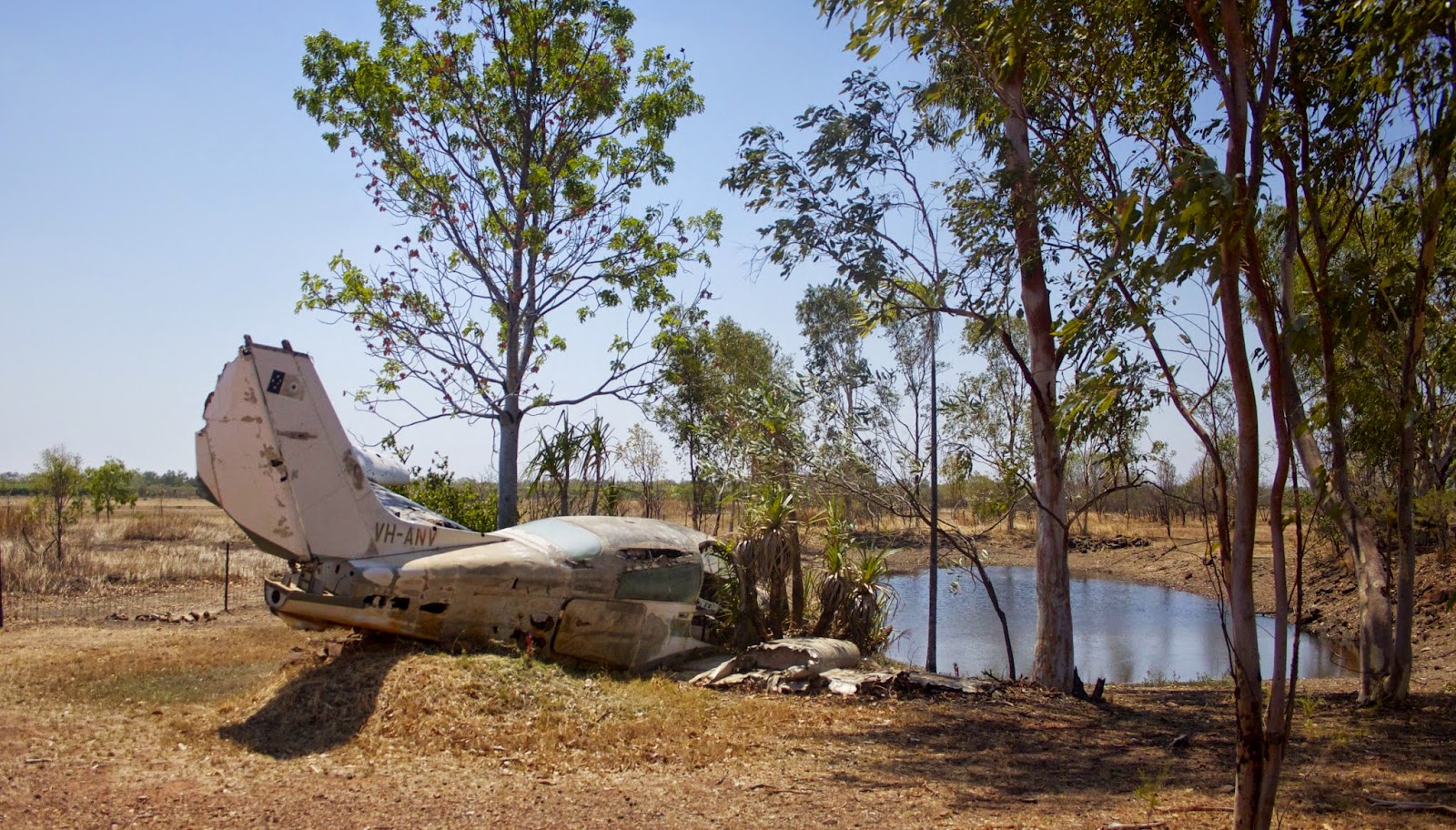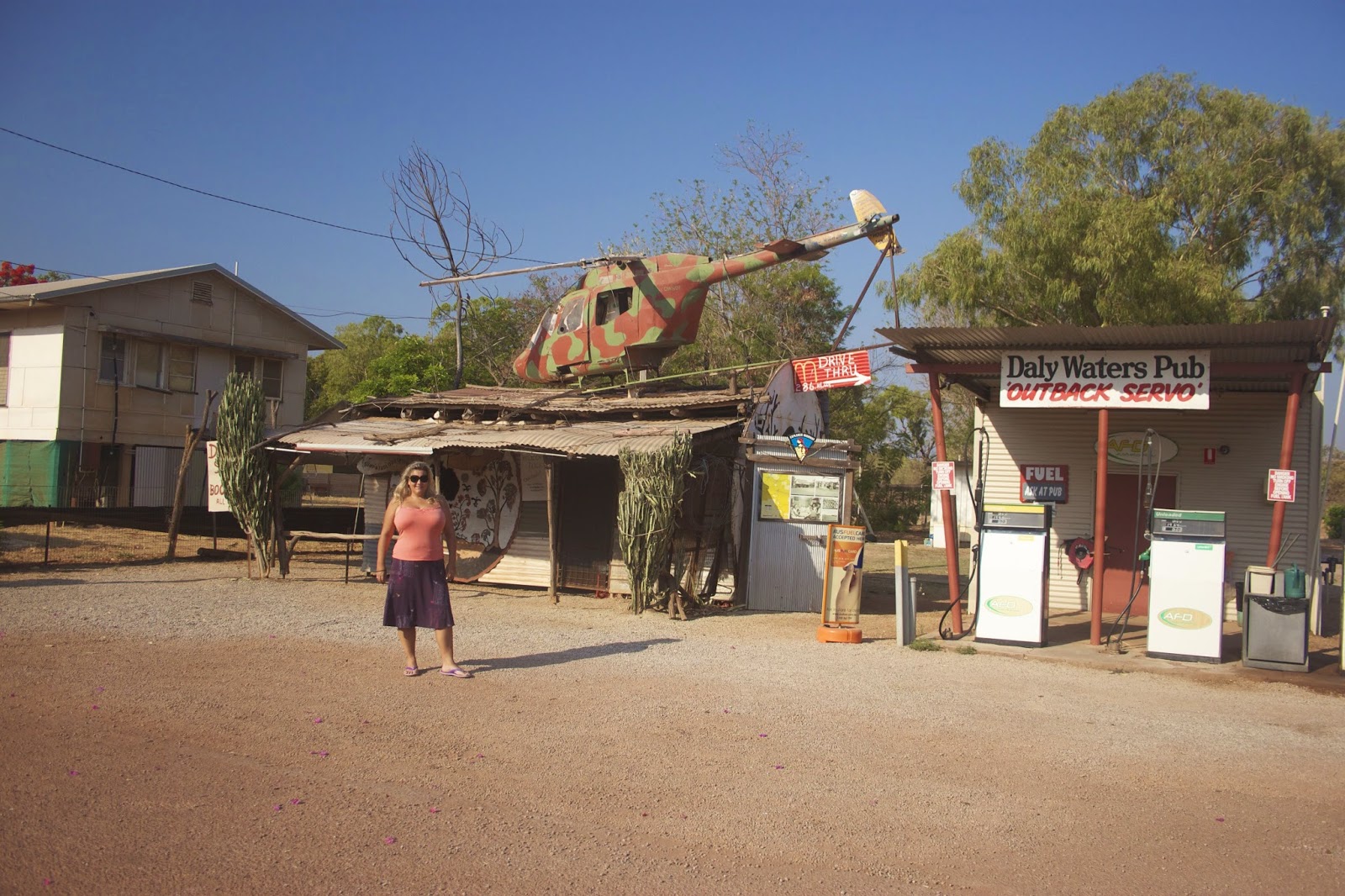The Stuart Highway is a sealed road transecting
Australia from Darwin in the north to Adelaide on the south coast. The road
maps closely the route taken by John McDouall Stuart in 1862. This explorer
was the first white man to find a route across the continent. It took him three
attempts, and he showed unparalleled leadership, as astoundingly he didn’t lose
anyone on any of his explorations. Once a path across the land was found an
Overland Telegraph was laid which joined Adelaide up to Darwin, then Singapore
and back to Great Britain.
For the main part, our journey has followed
this artery, often called the Explorers Way. It is often partnered by the
railway line for long sections as the two man made lines intertwine across the
landscape.
The road is straight and just goes on and on
and on. Generally the scenery was flat and the road continues into the horizon
as far as the eye can see, like some perspective drawing for a GCSE Arts
course. The horizon shimmered under the blazing sun and mirages were a common
sight. Sometimes we’d be caught by an unexpected strong gust of wind that would
buffer us sideways. Sporadically dust devils would whip up over the plains and
spin the dust into a vortex reaching up to the heavens.
We shared the driving, taking turns at the
wheel. Due to the remoteness we would hail other drivers and always slow down
to check things were okay if a vehicle had pulled off the road. We often saw
only a dozen vehicles in an hour, often no one for twenty minutes and then a
mini succession of three vehicles strung together. These were campervans like
ours, locals in utes and road trains. These multi load lorries have to be seen
to be believed; consisting of four or five artic-sized trailers these are
magnificent transport machines.
In the Northern Territory the landscape was
dotted with termite mounds, some of these giant obelisks towered high above the
ground. In some areas these human-sized obelisks were clothed with t-shirts and
hats, some even had stick arms and held beer bottles, a sort of dirtman. Our
favourite was a termite mound bride, complete with wedding dress, veil and
bouquet.
Often marked by a simple wooden cross we passed
graves along the side of the road. Once in a blue moon dirt roads branched off
to a cattle station, mine or redundant WWII airfield, but for the most part the
bush was miles upon miles of gasping savannahs.
Diamond yellow road signs warned drivers of
Kangaroos, Horses and Cattle.
Occasionally we caught glimpses of wildlife,
soaring Wedge Tailed Eagles, Running Eagles and crows looking for carrion,
often unlucky flattened Roos or reptiles. As we ventured closer into the red
centre wandering steers became the road kill of choice. The cattle ranches are
so large they don’t fence them. These beasts blow up with decaying gas under
the hot sun and then explode. If the bodies are not dispersed by the Dingos the
bones and hide remain visible for many months. Once we spotted a lone Emu
crossing the road (I don’t know why…ha ha!).
Sarah had downloaded a copy of the
international best seller ‘101 Campervan Tips’. Using this as our Bible we followed
its common-sense advice. One tip we heeded was to refuel whenever there was the
option. It was regularly 250km plus between points of interest, and you never
knew if the next garage had fuel, so we kept our tank full. Unleaded petrol
ranged from $1.54 to $2.20 per litre. Blue road signs encourage drivers to take
a break with punchy slogans such as “Rest, Revive & Survive”, “Drowsy
Drivers Die”, “Survive this Drive” and “Take a Spell”.
Our seclusion meant that the radio didn’t pick
up any stations. To pass the hours we would read to each other. Sarah provided
entertainment in the form of newly invented games and over-enthusiastic
singing. Chris was grateful that she’d also thoughtfully downloaded from Radio
4 episodes of “Great Lives”. Our knowledge of Dylan Thomas, Rasputin, Oscar
Wilde, Dr Livingston, George Orwell, Kristy McColl, Gerald Durrell and Winston
Churchill was significantly enhanced.
Looks like this guy overshot a little
....and on and on and on.....
The explorer John McDouall Stuart is presumed to have carved the initial S on this tree on 25th May 1862 during his successful journey from Adelaide to Darwin 1861-2
...and on and on and on...
Its amazing what you find in the middle of the desert
Just a tiddler this road-train - only 3 trailers
One of the many telegraph stations established by the British in the 1860s following John McDouall Stuart's overland route, finally linking South Australia to the UK via Darwin and Singapore
Sarah's turn at the wheel
Livestock crossing
Maybe Sarah should have swerved for this one?!
There are apparently over a million wild camels in Australia, introduced by the first explorers to cross huge expanse of desert some escaped and have now thrived. They have started selling them back to the middle east but generally they also cull them as they do a lot of damage and have no natural predators
The iconic sight of an Australian windmill, used all over the country for pumping groundwater into storage tanks
Why did the Emu cross the road...?....and make us brake!
The Ghan railway line intertwines with the highway and runs parallel for hundred of kilometres at times
Chris's turn at the wheel
It's amazing what animals they do have in Australia!!
A wild kangaroo bounds out of the bushes
Tiny these termites...apparently!

























































